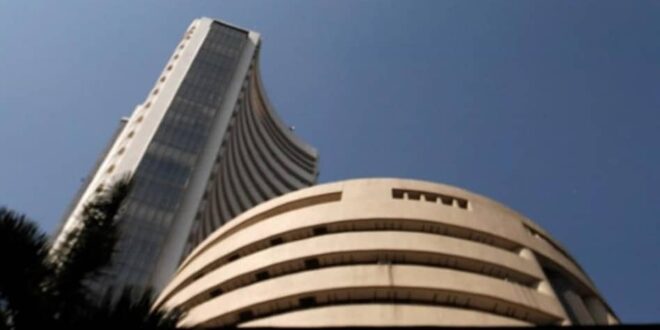In early trading today, the Indian stock market experienced a significant slump as both the Sensex and Nifty indices dropped sharply following signals from the US Federal Reserve regarding fewer rate cuts next year. This unexpected outlook from the Fed has sparked concerns among investors about global economic growth and its impact on emerging markets like India. This article delves into the reasons behind this market reaction, what it means for Indian investors, and the implications for the broader economy.
1. Market Reaction to the Fed’s Signals
The Sensex and Nifty indices fell in early trade as investors reacted to the US Federal Reserve’s indication that it may slow down rate cuts in 2025. The Fed’s comments, which pointed to economic resilience and contained inflation pressures, signaled a cautious approach to easing monetary policy. This led to a sell-off in global markets, including India, as market participants feared that less aggressive rate cuts in the US could slow down economic growth and lead to tighter liquidity conditions worldwide. The Sensex closed down by over 1% while the Nifty fell by more than 0.8%, reflecting the heightened uncertainty among investors.
2. Impact on Indian Markets
The Indian stock market’s response was swift and pronounced. As US interest rate cut expectations were scaled back, risk appetite among investors waned, leading to significant losses in key indices. This was particularly pronounced among sectors sensitive to global liquidity conditions, such as IT, real estate, and banking. The decline in these sectors reflects concerns about the potential for reduced foreign capital inflows and increased borrowing costs, which could impact corporate profitability and growth prospects in the Indian economy.
3. Key Factors Driving the Sell-Off
Several factors contributed to the slump in the Sensex and Nifty:
- Global Economic Uncertainty: The Fed’s comments about economic resilience in the US and the possibility of fewer rate cuts were seen as a potential risk to global economic growth. Investors are concerned that the pace of recovery may slow down, particularly in emerging markets, if the US maintains a tighter monetary policy stance.
- Impact on Foreign Portfolio Investment (FPI): With expectations of fewer rate cuts, foreign institutional investors (FIIs) may become more cautious about investing in Indian equities. This is likely to affect the inflow of foreign capital, which has been a crucial driver of the Indian market’s rally in recent years.
- Sectoral Impact: The decline was widespread across sectors. The IT sector, which is heavily reliant on global demand, faced the biggest losses as concerns grew about lower outsourcing budgets from Western economies. The real estate sector also witnessed a slump due to worries over higher interest rates impacting affordability and demand.
- Bond Yield Spikes: The increase in US Treasury yields following the Fed’s signals led to a rise in bond yields globally, including in India. Higher yields could result in tighter financial conditions, raising borrowing costs for companies and dampening capital expenditure plans.
4. Implications for Investors
The decline in the Sensex and Nifty serves as a reminder of the interconnectedness of global financial markets. For Indian investors, it underscores the importance of diversification and staying informed about global macroeconomic trends. As the Fed’s policy outlook becomes clearer in 2025, investors may need to reassess their portfolios and consider hedging strategies to mitigate risks associated with interest rate movements and economic uncertainties.
5. Outlook for the Indian Economy
The near-term outlook for the Indian economy remains uncertain as it navigates through these global headwinds. The Reserve Bank of India (RBI) will likely monitor these developments closely to ensure financial stability and support economic growth. Domestic economic indicators, such as GDP growth, industrial production, and corporate earnings, will be crucial in assessing how resilient the Indian economy is to changes in global monetary policy.
Conclusion
The early trade slump in the Sensex and Nifty reflects the broader uncertainty surrounding global monetary policy and its impact on emerging markets. As investors adjust to a potential slowdown in US rate cuts, the Indian market’s response highlights the importance of staying informed and prepared for shifts in economic sentiment. With cautious optimism, Indian markets will likely remain volatile in the near term, demanding a measured and strategic approach from both investors and policymakers.
 Business Sandesh Indian Newspaper | Articles | Opinion Pieces | Research Studies | Findings & News | Sandesh News
Business Sandesh Indian Newspaper | Articles | Opinion Pieces | Research Studies | Findings & News | Sandesh News



